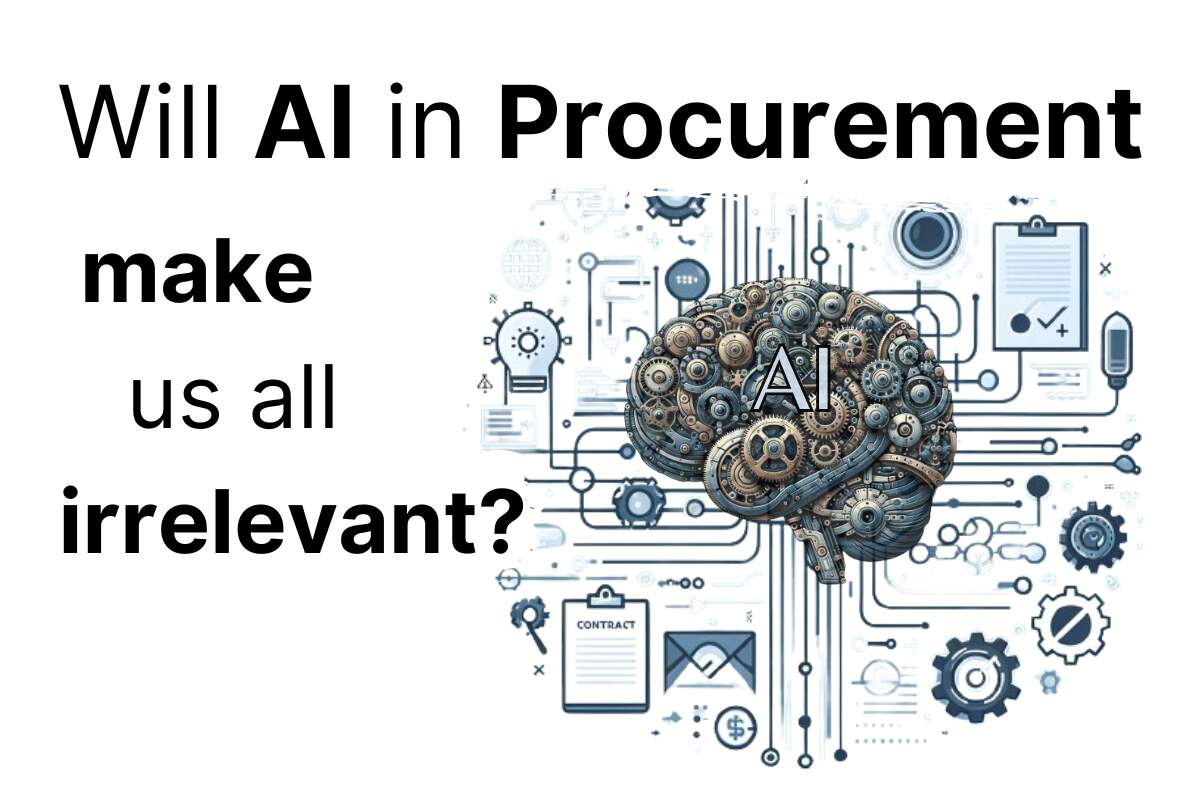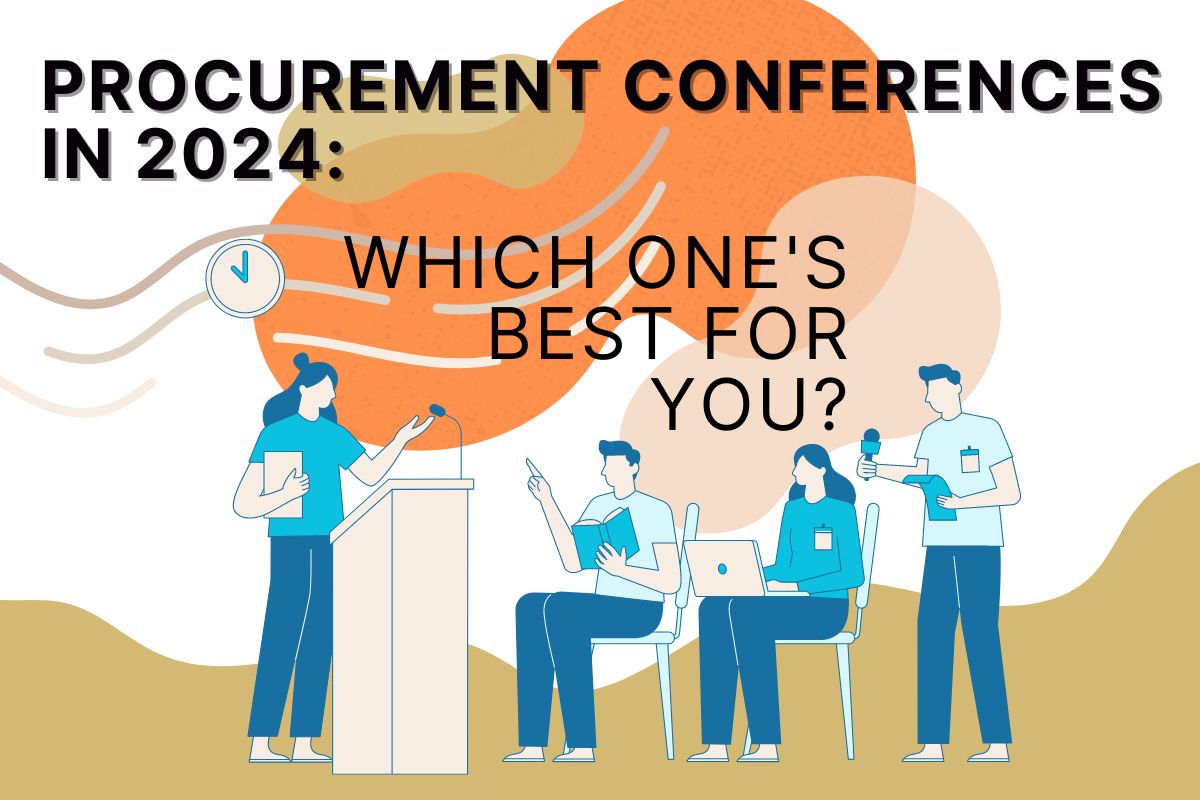Let’s put together a team that represents the future of procurement. One that’s fit for the rapid period of change that we’re currently living through. What would my dream team look like?
Join me on this fictitious journey of transforming an existing procurement organisation into one that will still be relevant in 2030.
We’ve got automation, digitisation and AI in procurement pushing boundaries. While on the other hand we must equip our teams to tackle sustainability, geopolitical instability and ensuing supply chain disruptions.
So, what would I put in place if I wanted to combine the very best of human and machine to have one ultimate ass-kicking procurement team?
The Future of Procurement: My dream team for 2030
I’m going to use a very simplified example.
Let’s try to get some creativity flowing in terms of what could you do with existing resources, wage bill, head count while bringing some tech into the mix as well.
First things first. I’m not going to paint a utopian picture. I want to present what’s possible in the real world.
So, let’s assume that we’re probably not going to get additional budget for more people or tech investments. If you can do, then great, it gives you more options. You’re one of the lucky ones to have a progressive employer!
But well all know it’s notoriously hard for procurement to get any additional budget for anything. So, I’m going to take the current wage bill that I would be paying my existing procurement team.
Then, I’m going to explore how can we deliver a mix of varied procurement roles and tech to get a team that can perform on all cylinders. And I’m going to do this with the exact same total amount you’re currently spending on salaries.
The current procurement team setup
So let’s start off by assuming that I’m a Head of Procurement. I’ve just gone into a greenfield role in a mid-market business. They have a team of 10 procurement category managers. Each of those category managers earns $100,000 gross per year, which gives me a $1 million salary bill.

I’m using simple numbers here.
I know that in different markets, procurement salaries differ. Take whatever number you want to put in this space and work with that if you want to do your own calculations. To keep things simple, I’m also ignoring any health insurance and employer social security contributions in these figures.
How would I take this category management team of 10 each on $100K a year? And how would I spend that total $1 million budget differently?
Getting rid of the administrative waste in procurement
Firstly, in 2030 we will not be spending time on day-to-day admin tasks. So, we need to tackle the current problem of administrative waste.
I estimate that the typical Category Manager spends around a third of their day on non-value added tasks.
The backbone of the team is still going to be Category Managers. So, we need to get them working more efficiently. That means offloading a lot of the stuff that they shouldn’t really be doing, considering their salary and level of experience.
These are knowledge workers. They’re highly qualified, very effective team members that can deliver a lot of value. It’s imperative that we free up their time.
So, how do we stop them getting stuck in the weeds every single day?
Well, perhaps counterintuitively, the first thing I’m going to do is reduce the number of category managers from 10 down to 5. Let’s assume that they maintain the same salary.
You could of course make the argument that if you pay them a little bit more, you’re going to get better people. I fully accept that. But for this example I’m going to keep things simple.

So how would I spend the other half?
Instead of Category Managers, I’m going to have one Procurement Business Partner.
They’re probably going to be on roughly the same salary as a Category Manager. This person will have to be a very good communicator and excellent at stakeholder management.
In essence, this person is my relationship building guy or gal. They’ll help the team navigate office politics, different business units, and build relationships with some of the more challenging stakeholders we have to deal with.
I’m therefore going to assume that this person is going to earn the same salary as the Category Managers, so $100K.

So that’s 5 category managers, one procurement business partner, $600K spent so far.
Now, let’s move a little bit away from traditional procurement roles. How else am I going to make my team fit for the future of procurement in 2030?
What gets measured, gets managed. Data, data, data
We need good data. Why? Because data is the new gold.
Amazon is not really an e-commerce company. It’s a data company.
Tinder is not really a dating app. It’s a data company.
Airbnb is not really an accommodation website. It’s a data company.
You get the gist.
So, I’m going to employ a Data Scientist.
And Data Scientists aren’t cheap. I’m going to assume that I’ll have to pay $150K, so a 50% premium vs. the Category Manager and Procurement Business Partner salary.
I’ve spent $750K of my budget. I’ve got five category managers, one procurement business partner, and one data scientist.
What next? Well, I’m also going to need an Analyst. If I’m going to be halving my number of Category Managers, I need someone who can get stuck into everyday data analysis. These are the tasks where a competent Data Analyst is needed but doesn’t warrant a Data Scientist who has Python programming capability.
A full stack Excel expert, if you will. Someone who knows formulas and all the different ways to present and structure and slice and dice data within Microsoft Excel, Google Sheets or Power BI.
A Data Analyst is typically not going to cost as much as a Procurement Category Manager. I’ve assumed that this person will command a $75K salary, so half a Data Scientist salary. Perhaps I’m underestimating this number a little. I’ll justify this by saying this is a role which can easily be done remotely. It therefore gives me some wiggle room to use geo-arbitrage to hire an A-Player in a lower cost country.

So, we’ve now got a procurement business partner, a data scientist, and an analyst on my team, which are going to be doing a lot of the grunt work when it comes to crunching data and communicating with the business.
I’ve already relieved my Category Managers of a lot of stuff they typically won’t be super proficient at.
And I’ve spent $825,000 of my $1 million budget.
Back to the Future – the return of the Admin Hero
We’ve still not touched on the elephant in the room.
There’s an awful lot of admin work that bogs down Category Managers. And well, Sales teams still have admin assistants, don’t they? Maybe it’s because they’re the unsung heroes in every team…
In 2030, most of this admin will be automated. As we’ll explore in a minute, we’ll be implementing some tech to assist with automation and user experience (UX) too. But, for now, let’s accept that the future of procurement hasn’t fully landed.
Some admin is still inevitable in 2024.
And I don’t want my folks on 6-figure salaries doing it.
So, my last employee is going to be an Admin Assistant.
This person will also have some experience with internal comms and content marketing. Like it or not, part of a successful stakeholder engagement strategy is marketing. We must explain what procurement does and the value that we drive to the wider business. This will become increasingly important.
By 2030, I predict that Procurement will be focused more on value maximisation rather than cost savings. Communication and feedback from our internal business partners will be vital to make that step up and to succeed.
I think is going to be a real game changer. It will really move the needle and drive that added value we can drive if we’re freed of our shackles of grunt work. And an internal comms specialist will help us to explain to the wider business what we do and where we can add value.
Yes, it needs board level sponsorship to raise Procurement’s stature. But it also needs effective communication.

My A-player admin hero I have assumed would command a $50K salary.
That may seem a little bit low if they’re also going to be a whizz when it comes to content marketing and communications.
But, like the Data Analyst, I have a global pool of people available to me for this role. It can be done remotely, if they’re a strong communicator and a native speaker of the language that the business operates in.
My optimised team to weather the future of procurement
So, that’s $875,000 of my $1 million budget spent. I have 9 employees within that mix.
- 5 Category Managers;
- 1 Procurement Business Partner;
- 1 Data Scientist;
- 1 Data / Business Analyst;
- 1 Admin Assistant who would double up as an Internal Comms person.
That’s 9 in total, whereas previously I had 10.
I’ve reduced my headcount by 10%.
But, we’ve got a much more interesting mix in there to get a more productive set of work and tasks done with a little bit less resource.
How am I going to augment this resource? I have to compensate for the one head that is missing from my previous team. And, perhaps unsurprisingly for anyone who knows me, I’m going to invest in some tech…
Choosing the right tech for the future of procurement
My remaining $125k of my budget is going to be spent on procurement software.
You could spend this in a whole range of ways and I’m not going to go into huge detail here. Every business is different and could require different tech to solve their specific challenges.
I would say, however, that probably the first thing to do would be to get some spend analytics in place.
And then the second thing? Let’s get the basics right first.
We need to clean our supplier data and have some P2P software in place. If I’m reducing my count of front-line Category Managers from 10 down to 5, then we must automate and simplify.
We can’t run procurement in a clunky ERP system. Our stakeholders’ day-to-day requirements and tail end spend must be predominantly self-serve.
Looking at the whole 80-20 principle, we must remove a lot of the noise that category managers are getting dragged into. Along with these other roles that I’ve got in my future of procurement blueprint, I’m enabling them to focus on strategic work.
That’s why my personal preference is to implement spend analytics and P2P software first.
Only then as a second step would I perhaps look at some of the more advanced technology that’s out there.
Something which helps me with strategic sourcing or contract management would probably be my next step. It really all depends where the biggest pain points, challenges and opportunities are.

What capabilities would these digital procurement tools have?
What could your budget get for you, in terms of what all these different applications do?
We covered this already in this article (link), and also in our introductory Digital Procurement 101 Online Course.
But, suffice to say, I know the market, and I know I can get spend analytics and P2P software that does the job for $125k.
What do you think? Drop me a message and I’d love to get your opinions on what you’d do differently and where you agree with me.


